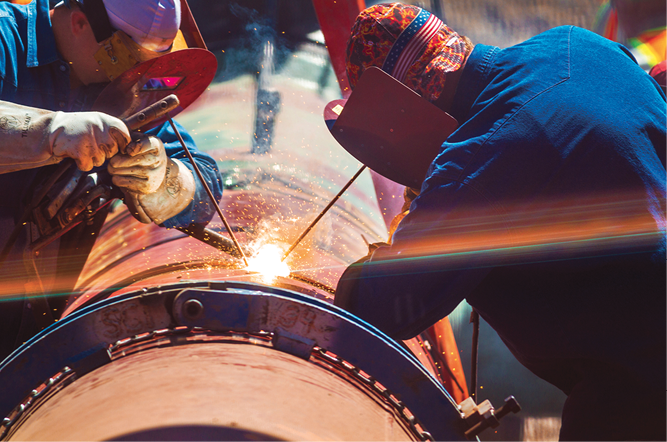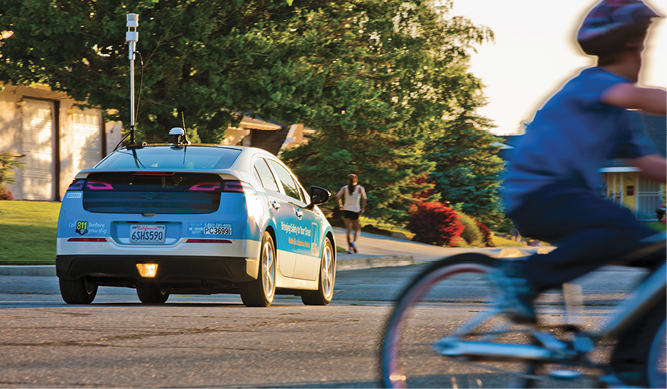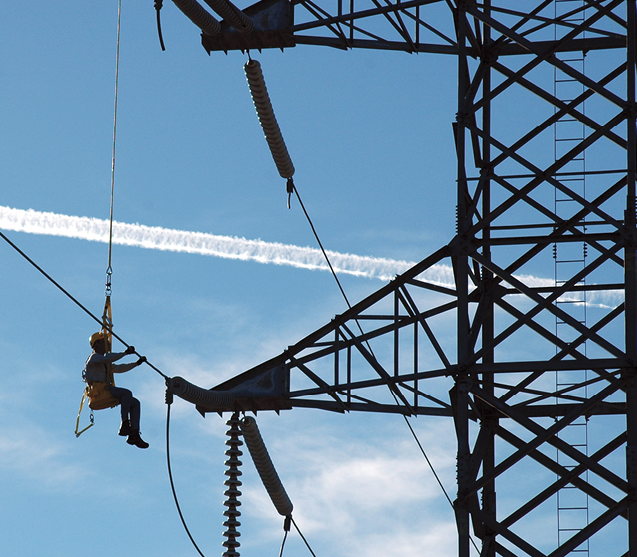


![]()
ONLINE

Safety, Reliability,
and Affordability
Editors’ Note
Chris Johns is also a member of the utility’s Board of Directors. Johns joined Pacific Gas and Electric Company in 1996 as Vice President and Controller. He was elected Chief Financial Officer in January 2005. He was named President of Pacific Gas and Electric Company in August 2009. Before joining PG&E Corporation, Johns was a partner in KPMG Peat Marwick LLP. He earned a bachelor’s degree in accounting from the University of Notre Dame. He has also completed the executive Nuclear Reactor Technology Program at the Massachusetts Institute of Technology.
Company Brief
PG&E Corporation (pge.com) is a Fortune 200 energy-based holding company, headquartered in San Francisco. It is the parent company of Pacific Gas and Electric Company, California’s largest investor-owned utility. PG&E serves nearly 16 million Californians across a 70,000-square-mile service area in Northern and Central California.
How has Pacific Gas and Electric evolved throughout its long and storied history?
PG&E was incorporated over 100 years ago, but we’re an accumulation of a lot of different companies that started over 150 years ago with the desire to light up San Francisco.
We’re the ones that built the energy infrastructure in Northern and Central California, and we’re integrated into the communities we serve because we live and work there. As we’ve grown, we have tried to keep that spirit alive.
Today, we serve almost 16 million people, and that is over a 70,000-square-mile territory that ranges from Bakersfield to the Oregon border.
So as much as our company has grown, we’re still very focused on being our customers’ local utility, and we’re now focused on building the 21st century infrastructure that our communities will need into the future.

PG&E’s gas operations recently earned
two international
certifications from leading third-party
standards organizations.
Is it hard to maintain the culture as the company has grown?
It’s something you always have to keep your eye on. The way we focus on it is to make sure we’re setting the appropriate tone at the top. We’re always keeping ourselves focused on the core values that our success depends on and, for us, that begins with safety, not just for our employees but for the public as well.
From there, it’s about making sure we engage with our teams to create an environment that is open, where people are willing to raise their hands if they see something of concern and where our leadership listens and takes action.
Following tragedies like the San Bruno pipeline explosion, how do you make sure you’re consistently meeting safety requirements?
We have accomplished quite a bit in the wake of San Bruno.
This is not just about the gas part of our business. We took the lessons learned from San Bruno and applied them to the electric part of our business, as well as power generation and all aspects of what we do.
It all begins with safety and making sure we’re aligned in how we think about our safety culture, and making sure everybody is building safety into our work processes.
Along those lines, we’ve brought in new leadership on the gas side. We have restructured the organization and brought in some of the most experienced leaders in the industry to run it. We have digitized records, conducted pressure-testing and replaced pipes, and put in automated or remotely controlled valves – we have done more infrastructure investment over the past few years than any gas company in the U.S.
We built a new gas operations command center that is state-of-the-art. It gives us the ability to see our entire system and respond more quickly to emergencies, and it employs the most advanced leading-edge technology.
We also recently became one of the first utilities in the entire world to earn two of the highest gas safety certifications from leading third-party standards organizations.

PG&E has begun using car-mounted gas leak detection
technology that is 1,000 times more sensitive
than traditional equipment.
How great is the concern for cybersecurity?
It’s an issue that we take seriously. We want to make sure we’re securing our assets, and that we don’t create an opportunity for folks to access our physical or digital assets and compromise the way we run our system.
The entire industry has been focused on working together on this issue. Our industry is very transparent. We have committees of CEOs and CIOs across the country who are working together to establish standards and share information. We also have good partnerships with the federal government, because they have great access to information about potential threats and the newest technologies that people are using, and they are sharing that information to help us put safeguards in place.
The challenge for us is that every time you find a fix, somebody else is working hard to find a way around it. It will require a constant investment to safeguard our assets.
Is innovation in the field primarily related to the technology or is it in other areas of the business?
It can be about technology, but innovation for PG&E has been part of our history since the day we started. Our hydroelectric system is the largest privately owned hydroelectric system in the U.S. We were able to work within the river system in very remote areas and to create water flows that were still friendly to the environment while providing power to people throughout Northern California. Our Helms pumped-storage facility takes water from the reservoir at the top of the hill and creates electricity down to a reservoir at the bottom of the hill, but at night when the power is not needed and there is available power, we pump the water back uphill so we have it again for the next day to create more electricity.
This is a valuable asset in today’s world, as more renewables are coming online. Renewables are intermittent sources in that solar is only available when the sun is up and wind is only available when the wind is blowing, so you need resources to quickly ramp up and down to fill the voids when those resources aren’t available.
The engineering innovation that goes on is incredible. In terms of what we’re doing today, we’re at the forefront of creating a smarter, self-healing grid that will enable customers to plug and play. We’re installing smart switches that can detect if there is an outage somewhere and automatically reroute electricity. Other devices can detect fluctuations and automatically alert us to potential outages so we can get ahead of the game. And all of this is also tied in with the smart meter, which gives us a wealth of real-time information about our system, and gives our customers the ability to see their usage on an hourly basis. All of this is giving us new and better capabilities to reduce outage time and maybe prevent outages from occurring based on the information we get back.
So it is more than just the technology piece; it’s also the engineering piece, and it’s also how we continuously improve and work to be as efficient as we can be.

Part of PG&E’s infrastructure is more than 18,000 circuit miles
of interconnected electric transmission lines.
Is it critical that you’re building a workforce to mirror your diverse customer base?
We have had a historically long view of diversity as a key strategic advantage. We serve a very diverse population, and those communities expect us to serve them based on who they are.
We are focused on making sure our workforce and the people we do business with reflect the communities we serve. Doing this gives us a much better understanding of our customers’ needs and expectations, and it helps us better serve them, and better earn their trust and confidence.
For each of the past 11 years, we have increased our spending with diverse suppliers.
It’s been our experience that bringing more diversity into our supply chain leads to more innovation and creativity in developing cost-effective solutions. So this is a win-win for everyone. We’re able to build a broader, stronger network of partners; those companies are able to grow and hire more people; and it puts money back into the local economies in the communities we depend on.
Is the dialogue that is taking place today on a national energy policy the right one?
We support a national energy policy but only where it makes sense – for example, setting standards for clean energy and energy efficiency. What’s critical is that, where there is a federal policy, it works in harmony with the state policies. It’s important to recognize that states are different – California has long been out in front of a lot of energy policy issues, from the groundbreaking commitments on energy efficiency starting in the ’70s to a lot of the recent leadership on clean energy.
The policy has to allow states the flexibility to move forward.
We have to make sure that we, as an industry and as a country, are working to make sure the environment is intact for future generations. So we have to focus on what we can do today to ensure that.
What benefits does natural gas offer today?
Access to abundant, low-cost natural gas has been a game-changer for us as a country – it has created the opportunity for our country to have greater energy independence and not be as reliant on foreign supplies.
Natural gas has also driven down energy costs, not just for the end-use consumer but also through its use in generating electricity. And it creates a cleaner environment because it has the opportunity to displace a lot of the country’s coal-fired electric generation.
In addition, because of its abundance and because of the price, there are opportunities for expanding its use. In some parts of this country, we take heating or cooking with gas in our house for granted. But there are a lot of places in this country that still don’t have that option.
Providing that option for folks to bring natural gas into their house is a tremendous opportunity for America to lower its home energy costs.
It is also a cleaner and cheaper fuel for some forms of transportation, especially for longer-haul vehicles and shipping.
I do believe also that we have to be careful that we have a diverse mix of fuels in the U.S. with an appropriate balance of natural gas, nuclear, hydro, and renewables such as wind and solar, as well as geothermal.
Also, we want to make sure we’re harnessing, transporting, and using natural gas in a safe manner.
Is the importance of nuclear energy well understood?
Although we won’t be building nuclear in California any time soon, it’s an important part of the national energy mix. It has proven to be a safe energy resource and, just as significantly, it is a reliable, greenhouse gas-free resource.
Are the many positive ways this industry contributes to society fully appreciated?
We could do more as an industry to help our customers understand the value of what we’re providing. It’s taken for granted, but this is okay because it means that we’re providing that resource in a safe, reliable, and affordable manner.
But we have an opportunity as an industry to continue to provide transparency for our customers, and help them see the true value and opportunities they have.
People will someday want to put solar panels on their rooftops, battery storage in their garages, or be able to purchase electricity from their neighbors. We have to create the grid that will allow that to happen, and also help our customers understand that we’re providing that service for them.
Ultimately, we want them to understand that we’re a positive influence in their communities – that we provide them with a source of energy that allows them to live their lives however they want.•